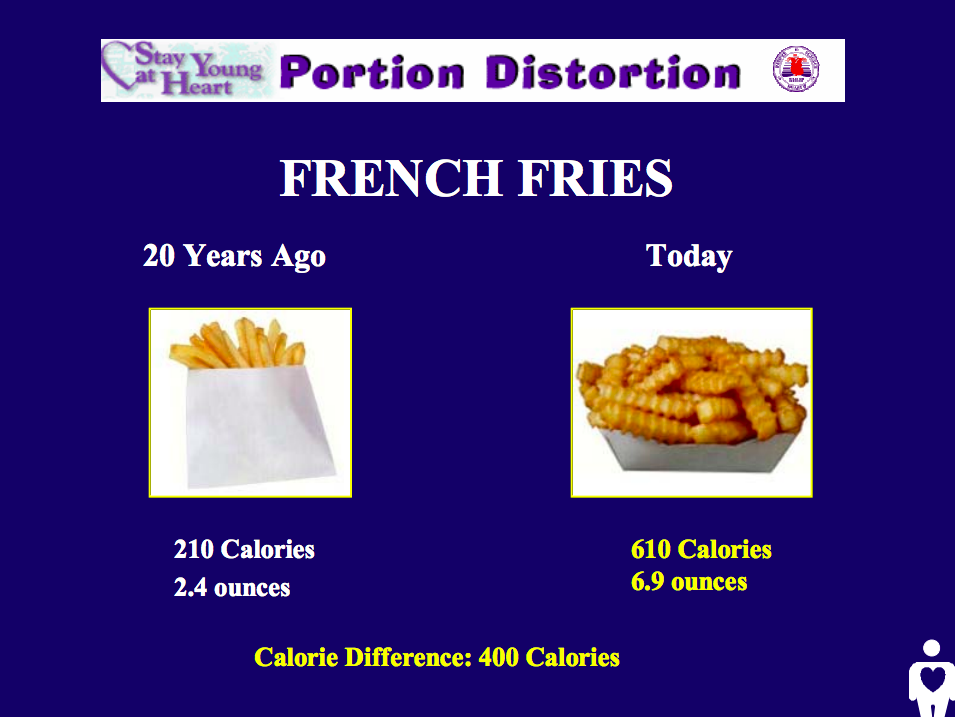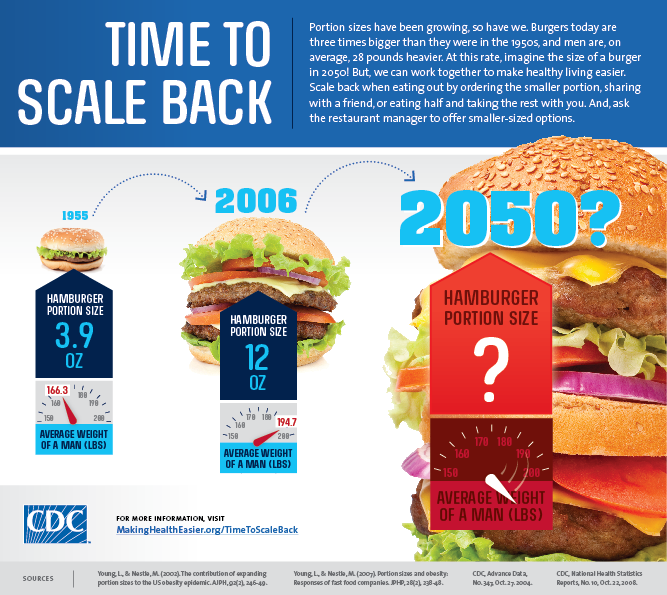Food Portion Sizes Have Exploded

By:
Over the past 30 years, the amount of food that ends up on your plate—and that you end up eating—has increased significantly. It's not just fast food joints, either. Portion sizes have gone up at American restaurants and home kitchens, too, according to the National Heart, Lung, and Blood Institute.
It's called portion distortion, and it's thought to have contributed to the country's growing obesity problem. More than one-third of American adults (78.6 million) are obese; rates of obesity have been climbing steadily, on pace with trends in portion size, and as healthcare professionals attempt to combat the crisis, they're finding that portion distortion has played a fundamental role.
In the late '90s researchers at the University of North Carolina at Chapel Hill analyzed the results from three national surveys on nutritional trends and determined that "between 1977 and 1996, portion sizes increased for salty snacks, desserts, soft drinks, fruit drinks, French fries, hamburgers, cheeseburgers, and Mexican food."
"Many people have thought that portion sizes might be on the rise, but until now, there have been no empirical data to document actual increases," the study's co-author Samara Joy Nielsen said in a press release. "We think this is important information not only because it documents this trend, but also because obesity presents a growing health threat both in the United States and abroad."
 National Institute of Health - nih.gov
National Institute of Health - nih.gov
About a year after the study was published in the Journal of the American Medical Association, fast food chain McDonalds began to phase out its "supersize" option, which allowed consumers to get even larger portions of the already large servings of fries and drinks that the chain offered. The decision also came after Morgan Spurlock's 2004 documentary, "Super Size Me," was released, highlighting the fast food industry's impact on public health.
"Restaurant meals of all kinds have gotten larger with an emphasis on getting more food for the money," the Center for Disease Control and Prevention wrote in a 2006 report. "Americans are surrounded by larger portion sizes at relatively low prices, appealing to the consumer's economic sensibilities. However, the cost to America's health may be higher than most people realize."
 Center for Disease Control and Prevention - makinghealtheasier.org
Center for Disease Control and Prevention - makinghealtheasier.org
The problem with skyrocketing portion sizes is that people usually aren't conscious of how big their meals are, or how much bigger their getting. In one study, led by researchers at Penn State University's College of Health and Human Development, volunteers were given varying portions of macaroni and cheese every day for lunch, and when they got more, they ate more—approximately 30 percent more.
"It didn't matter if it was men or women, dieters or non-dieters, people who were overweight or not, people who habitually clean their plates or not," the study's lead author, Barbara Rolls, told ABC News. "Everyone responded to the increased portion size by eating more."
